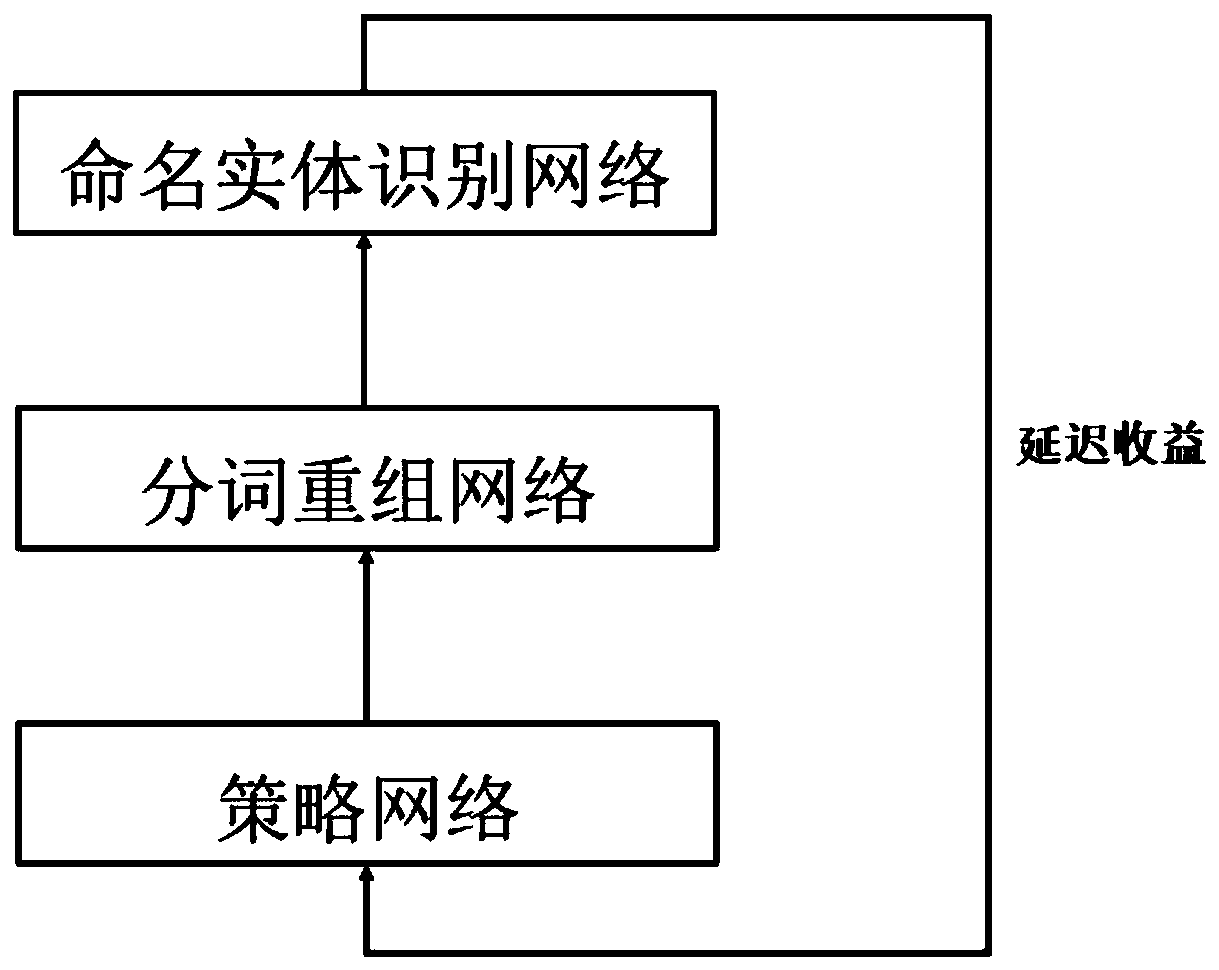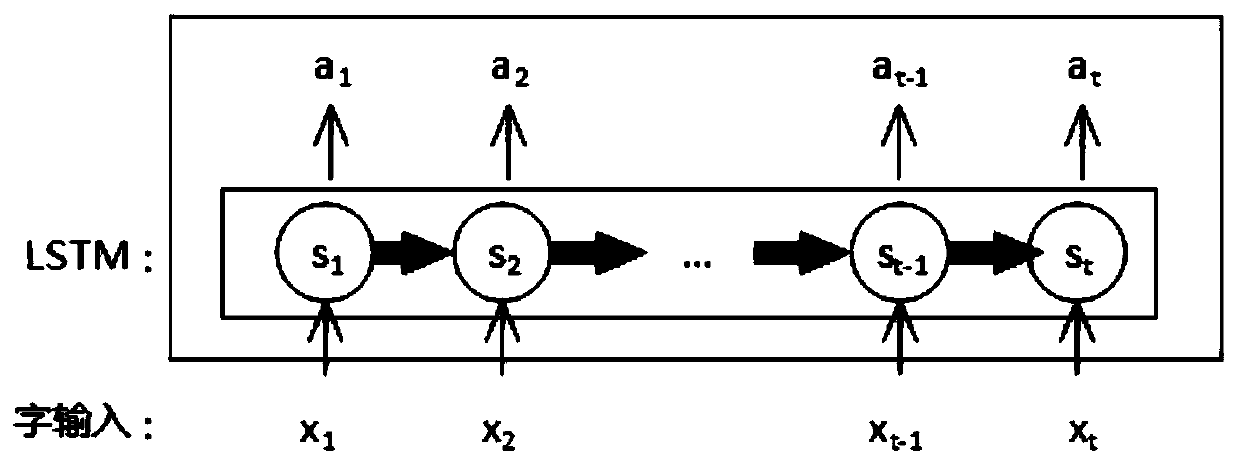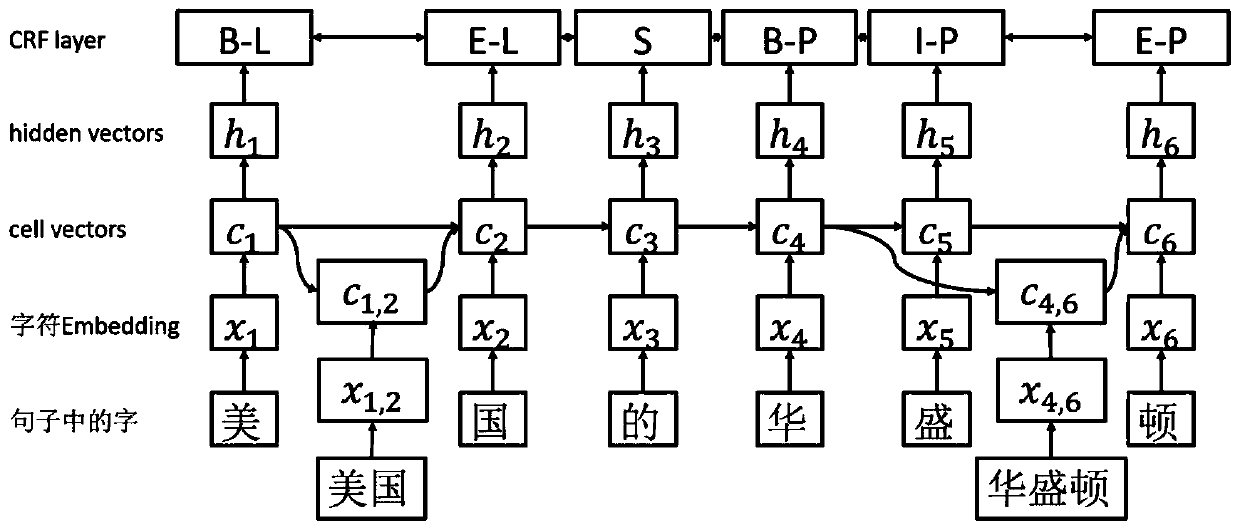Chinese named entity recognition model based on reinforcement learning and training method thereof
A named entity recognition and reinforcement learning technology, applied in the field of machine learning, can solve problems such as increasing model complexity, external dictionary dependence, and negative impact of entity recognition
- Summary
- Abstract
- Description
- Claims
- Application Information
AI Technical Summary
Problems solved by technology
Method used
Image
Examples
Embodiment 1
[0061] Such as Figure 1-3 Shown is an embodiment of a Chinese named entity recognition model based on reinforcement learning, including a policy network module, a word segmentation reorganization network and a named entity recognition network module;
[0062] The strategy network module is used to adopt a random strategy to sample an action (action includes internal or termination) for each word in the sentence in each state space, thereby obtaining an action sequence for the entire sentence, and according to the recognition of the Chinese named entity recognition network The result is a delayed reward to guide the update of the strategy network module; the random strategy is:
[0063] π(a t |s t ;θ)=σ(W*s t +b)
[0064] Among them, π(a t |s t ; θ) represents the selection action a t The probability of ; θ={W,b}, represents the parameters of the policy network; s t is the state of the policy network at time t.
[0065] The word segmentation reorganization network is ...
Embodiment 2
[0073] Such as Figure 4 Shown is a kind of embodiment of the training method of the Chinese named entity recognition model based on reinforcement learning, is used for training the model described in embodiment 1, comprises the following steps:
[0074] Preprocessing: Pre-training the named entity recognition network and its network parameters. At this time, the words used by the named entity recognition network are words obtained by dividing the original sentence through a simple heuristic algorithm;
[0075] Some of the network parameters pre-trained by the entity recognition network are temporarily set as the network parameters of the named entity recognition network, and then the pre-training of the policy network is carried out, and finally the entire network parameters are jointly trained.
[0076] Step 1: Input the sentence data used for training into the policy network module, and the policy network module samples an action for each word in the sentence in each state ...
PUM
 Login to View More
Login to View More Abstract
Description
Claims
Application Information
 Login to View More
Login to View More - R&D
- Intellectual Property
- Life Sciences
- Materials
- Tech Scout
- Unparalleled Data Quality
- Higher Quality Content
- 60% Fewer Hallucinations
Browse by: Latest US Patents, China's latest patents, Technical Efficacy Thesaurus, Application Domain, Technology Topic, Popular Technical Reports.
© 2025 PatSnap. All rights reserved.Legal|Privacy policy|Modern Slavery Act Transparency Statement|Sitemap|About US| Contact US: help@patsnap.com



